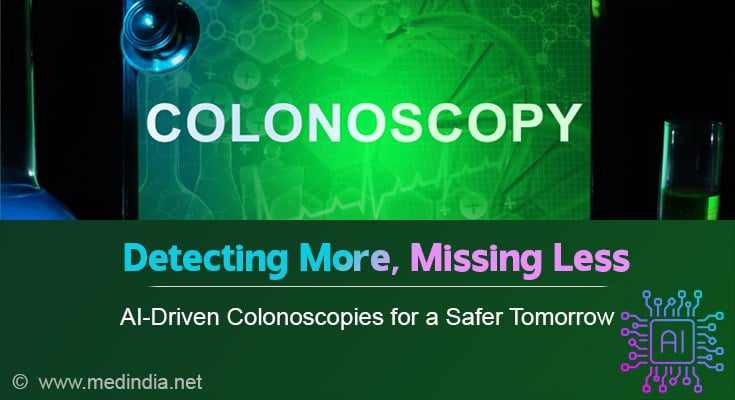The findings reveal a remarkable 52.5% and 50.5% relative decrease in polyp miss rates (PMR) and adenoma miss rates (AMR), coupled with a significant 23.8% and 24.2% relative increase in polyp detection rates (PDR) and adenoma detection rates (ADR).
What sets our study apart is its extensive scope, surpassing the latest research published. This comprehensive analysis, encompassing various key quality indicators, attests to the reliability of AI in real-world clinical settings. Crucially, our study highlights the pivotal role of AI-aided colonoscopy in identifying patients with advanced adenomas, the precursors with the highest potential for malignancy, thereby significantly reducing colorectal cancer (CRC) risk.
Previous Studies on AI Detection of Adenomas
Previous meta-analyses hinted at positive outcomes, but our study stands out by focusing on clinically significant lesions, such as advanced adenomas and sessile serrated lesions (SSLs). Notably, the increased detection of diminutive and small adenomas, often overlooked during traditional colonoscopies, could reshape surveillance strategies and curtail the risk of interval CRC.
Advertisement
While our findings support the increased detection of advanced adenomas at a per-patient level, there’s a nuanced observation regarding per-polyp level detection. Advanced lesions, being larger, are less prone to human oversight, potentially explaining the lack of significant increase in detection at this level. Additionally, AI-aided colonoscopy exhibited a higher rate of non-neoplastic lesion detection at a per-polyp level, signaling a nuanced landscape of detections.
Addressing concerns about increased procedure time and complications, our study alleviates worries by revealing a clinically insignificant 20-second increase in mean inspection time. Furthermore, the study brings attention to the potential for unnecessary resections for non-neoplastic lesions, posing a challenge in the debate around over diagnosis and over treatment.
Intriguingly, our study delves into factors influencing the effectiveness of AI-aided systems. Endoscopists with lower ADR or PDR, shorter inspection times, younger patients, and those with fair bowel preparation stand to benefit more from AI assistance. The study also hints at regional variations, with results from China showcasing better outcomes, possibly attributed to demographic and lifestyle differences.
Limitations of AI-based Colonoscopy
While our study offers groundbreaking insights, it acknowledges certain limitations, including variations in study quality and potential publication bias. Longitudinal studies are imperative to ascertain AI-aided colonoscopy’s long-term benefits and cost-effectiveness.
In conclusion, our research underscores the transformative impact of AI in revolutionizing colorectal neoplasia detection. Integrating AI in colonoscopy not only enhances detection rates but also presents a potential avenue for improving the quality and homogeneity of large-scale CRC screening programs. The road ahead involves further research to unlock the full potential of AI, ensuring its effectiveness in diverse conditions and populations, ultimately advancing the fight against colorectal cancer.
Reference :
- AI-assisted colonoscopies reduce miss rate by 50 percent – (https:www.mayoclinic.org/medical-professionals/cancer/news/ai-assisted-colonoscopies-reduce-miss-rate-by-50-percent/mac-20536196)
Source: Medindia



